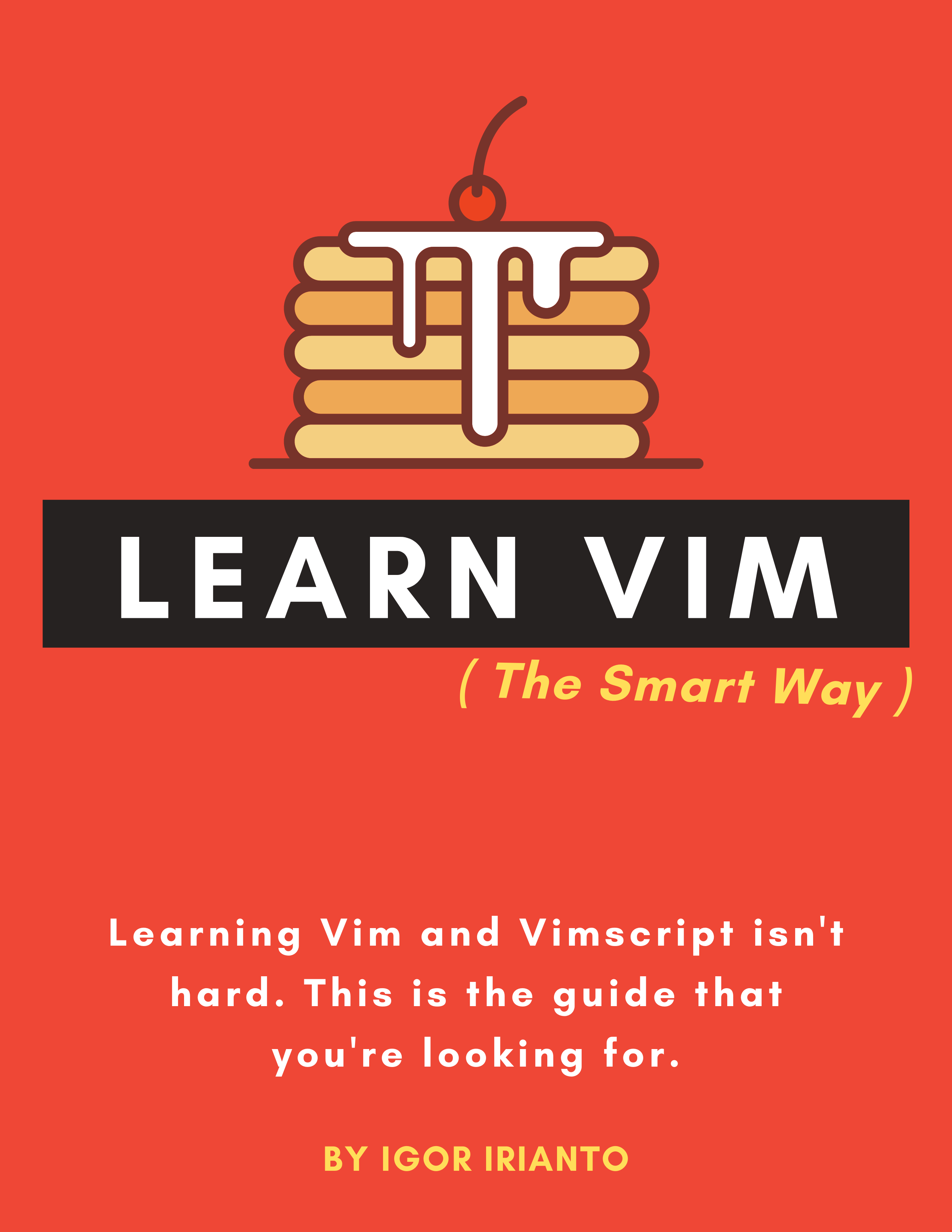Learn Vim (the Smart Way) is a guide to learn the good parts of Vim.
There are many places to learn Vim: the vimtutor is a great place to start and the help manual has all the references you will ever need. However, the average user needs something more than vimtutor and less than the help manual. This guide attempts to bridge that gap by highlighting only the key features to learn the most useful parts of Vim in the least time possible.
This guide is written for both beginner and advanced Vimmers. It starts out with broad and simple concepts and ends with specific and advanced concepts. If you're an advanced user already, I would encourage you to read this guide from start to finish anyway, because you will learn something new!
Follow @learnvim for updates, Vim tips, etc.
This guide is and will always be free.
If you want to financially support this project, you can purchase this guide on Leanpub.
- Ch 1 - Starting Vim
- Ch 2 - Buffers, Windows, and Tabs
- Ch 3 - Opening and Searching Files
- Ch 4 - Vim Grammar
- Ch 5 - Moving in a File
- Ch 6 - Insert Mode
- Ch 7 - The Dot command
- Ch 8 - Registers
- Ch 9 - Macros
- Ch 10 - Undo
- Ch 11 - Visual Mode
- Ch 12 - Search and Substitute
- Ch 13 - The Global Command
- Ch 14 - External Commands
- Ch 15 - Command-line Mode
- Ch 16 - Tags
- Ch 17 - Fold
- Ch 18 - Git
- Ch 19 - Compile
- Ch 20 - Views, Sessions, and Viminfo
- Ch 24 - Vimscript Basic Data Types
- Ch 25 - Vimscript Conditionals And Loops
- Ch 26 - Vimscript Variable Scopes
- Ch 27 - Vimscript Functions
- Learn-Vim 中文翻译(
zh-CN) - Learn-Vim Spanish(
es)
The materials here are all © 2020-2021 Igor Irianto.
This work is licensed under a Creative Commons Attribution-NonCommercial-ShareAlike 4.0 International.

